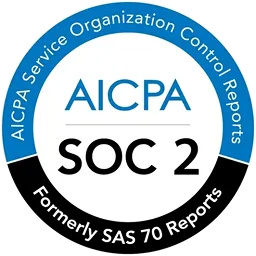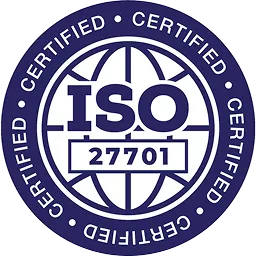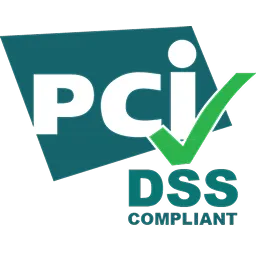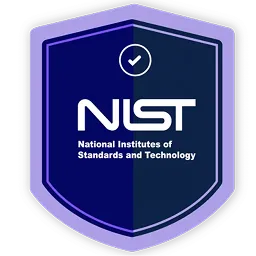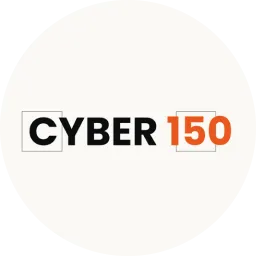Service request management software is essential for IT managers to efficiently handle user requests and streamline operations. In this article, we'll walk you through the top 15 service request management software that you can consider while choosing the suitable solution.
Selecting the right service request management software is a major challenge. With so many options available, finding the one that perfectly fits your organization’s needs can feel overwhelming. Making the wrong choice can lead to inefficiencies, increased costs, and frustration for both your team and the users.
The key to overcoming this challenge is to choose a solution that aligns with your organization’s specific needs and workflows. We will help you explore the top service request management software along with their features. It will help you make informed decisions while choosing the suitable solution for your organization.
But before exploring the list, let’s know more about service request management software.
What is Request Management Software?
Service request management software is a tool designed to help your team manage and fulfill requests from users within an organization. These requests can range from simple tasks like password resets to more complex issues like setting up new hardware or software.
Moreover, with this software, you can easily prioritize and assign tasks to team members, ensuring that nothing falls through the cracks. The software also provides a central platform where all requests are logged, making it easier to monitor progress and ensure timely completion. This helps improve the overall efficiency of your team and enhances user satisfaction.
Top 11 Service Request Management Software
Below we've curated a list of 11 best service request management software. These solutions will help streamline your service request service while enhancing employee overall experience.
1. Zluri

Zluri offers an access management solution that simplifies access request management. It provides your team with complete visibility into pending requests, recently raised requests, requests which have been approved, and the request status (whether the request is completed, still pending, or denied). This visibility enables them to effectively manage, organize and prioritize requests which makes the approval process faster and saves a significant amount of time.
How does it do that? Zluri’s access management integrates with Slack, offering your team with real-time access request notifications. So whenever an employee raises or submits a request, IT teams receive immediate notification on Slack.

Furthermore, the app access requests details (who has requested for what apps and for how long) appears in IT team’s Slack channel and also in Zluri's access request dashboard under pending requests. But how to approve the request?
Here are the steps to approve access requests:
Step1: Click on the application module (let's take Zoom as an example)and then click on the automation
Step 2: Under automation, you will find an option for provisioning, where you can create a playbook for auto provisioning (to grant access to Zoom).

Step 3: You need to set the actions (invite user, assign license). These actions will automatically run when you click on approve.
Step 4: You can also set automation rules. This option is available under "access request." With this feature, you can create triggers by filling in when and then conditions to run certain actions.
One additional step under this is to select app approvers (app owner or department head).
Step 5: At last, you need to go back to Slack and click on approve, and the provisioning playbook or automated actions will run.
Then, the employee will be notified that their request has been approved.
Compete View Of All The Access Requests Raised
Wistia_ID: svw7jw37f1
Zluri’s access management centralizes all access requests raised by employees, providing your team with complete request details in one convenient location. This helps your team to prioritize which app requests need to be approved first.
Not only that, to provide your team with more detailed view, Zluri’s access management categorizes requests into two subsections: pending and completed.
In the pending section, your IT team can easily identify which applications are awaiting approval, while the completed section displays all approved requests.
This way they dont have to go back and forth through different screens to find out which requests are pending and which are completed, saving time and improving efficiency. Also this minimizes the chances of missing out on approving requests.
Additionally, audit trails allow for tracking of actions taken, providing visibility into all details.
What are you waiting for? Book a demo now to witness how Zluri's advanced capabilities simplify your service management process.
Key Features
- Auto-assign Licenses: Upon approval of access requests, Zluri’s access review automatically assigns the licenses of requested applications to the employees. This saves your team time as they no longer need to manually assign license for individual applications.
- App requisition: Zluri’s access management offers an intuitive dashboard for app requisitions, allowing your team to view all the tickets at a single location. This helps in determining which tickets need to be resolved on a priority basis. Also which tickets still need to be assigned to the concerned IT support team, allowing you to streamline the ticket management process.

- Automated request approval rules: Your team can create triggers (when and then conditions) to automate request approval actions. For instance, your team can set automated rules for when a new employee from the finance department joins the organization and grant them access to SpendFlo.
This image shows that Zluri allows your team to create automation rules for the approval process.
Customer Rating
- G2: 4.8/5
- Capterra: 4.9/5
2. OneDesk
.webp)
OneDesk is a comprehensive service request software designed to effectively manage all types of service requests. Its tickets application offers clear visibility into the status of active requests, enabling users to effortlessly monitor the progress of work.
Additionally, OneDesk's seamless email integration automatically logs requests sent via email, ensuring that all communication related to the request is captured within the system as conversations. This integration maintains a cohesive link between conversation context and underlying work, facilitating efficient tracking and documentation.
Upon completion of a ticket and its transition to a "Resolved" status, OneDesk can automatically send notifications to the requester, providing updates on the status of the service request.
Key Features
- Custom Statuses: OneDesk provides IT teams with the flexibility to create custom statuses that depict distinct stages in a project request's life cycle. This feature offers clarity regarding the status of project requests, enabling teams to track progress effectively and make informed decisions.
Customer Rating
- G2: 4.3/5
- Capterra: 4.3/5
3. SolarWind Service Desk

SolarWinds Service Desk stands out as a prominent service request management solution renowned for its automated ticket assignment feature. This functionality streamlines the ticket routing process by implementing predefined rules that allocate incoming tickets or service requests to the relevant teams. By considering criteria such as categories, keywords, and requesters, the system ensures efficient ticket distribution, expediting the resolution process.
Features
- Automated Ticket Assignment: SolarWinds Service Desk facilitates the automatic allocation of tickets to designated teams, minimizing manual intervention and accelerating response times.
- Alert Rules: The platform empowers IT teams to establish alert rules, enabling prompt action in response to critical events impacting the organization. By automating alerts, teams can maintain focus on efficient ticket resolution while proactively mitigating potential issues.
- Machine Learning-driven Categorization: Leveraging machine learning capabilities, SolarWinds Service Desk automates the categorization of tickets. This assists both employees and IT teams in accurately selecting the appropriate category and subcategory, thereby enhancing efficiency and reducing response times.
By harnessing artificial intelligence (AI), the system enables automatic ticket classification, routing, prioritization, and escalation, ensuring swift and effective resolution by the relevant teams.
Customer Rating
- G2: 4.4/5
- Capterra: 4.6/5
4. ManageEngine ServiceDesk Plus

ManageEngine ServiceDesk Plus provides a comprehensive array of service request management features, proactive automation, and customizable workflows, significantly expediting the ticket resolution process. Additionally, its IT project management capabilities empower IT teams to efficiently plan, organize, and assign tasks for all projects. This includes associating projects with changes and problems and assigning them to designated teams or individuals, thereby augmenting IT service delivery effectiveness.
Moreover, ServiceDesk Plus offers service catalogs showcasing all technology-related services provided by organizations. This feature enhances visibility and accessibility for users, facilitating streamlined access to available services and resources.
Features
- Service Request Management: ServiceDesk Plus offers a robust platform for managing service requests, equipped with proactive automation and customizable workflows. This empowers organizations to streamline ticket-handling processes and ensure swift resolution.
- IT Project Management: With ServiceDesk Plus's integrated IT project management module, IT teams gain the ability to efficiently plan, organize, and assign tasks for all projects. Projects can be associated with changes and problems, allowing for seamless coordination and enhanced service delivery.
- Service Catalogs: ServiceDesk Plus provides comprehensive service catalogs showcasing all technology-related services offered by organizations. This feature enables users to easily access and request the services they need, promoting efficiency and transparency.
Customer Rating
- G2: 4.2/5
- Capterra: 4.4/5
5. Jira Service Management

Jira Service Management offers a comprehensive service request management solution tailored to enable IT teams to efficiently handle service requests, incidents, changes, and endpoint management processes. Its seamless integration with other Atlassian tools, including Jira Software and Confluence, fosters enhanced collaboration and streamlined workflows across different departments, empowering teams with contextual data for informed decision-making.
Features
- Service Request and Incident Management: Jira Service Management equips teams with the capability to monitor and prioritize service requests and incidents effectively, ensuring that critical issues are addressed promptly. This proactive approach helps maintain service quality and minimize disruptions.
- Integration with Atlassian Tools: By integrating seamlessly with Atlassian's suite of tools, such as Jira Software and Confluence, Jira Service Management facilitates enhanced collaboration and workflow management. Teams can leverage these integrations to share information, track progress, and coordinate tasks efficiently, thereby improving overall productivity.
- Efficient Tools: The software provides teams with efficient tools, including bulk actions and intelligent grouping powered by machine learning. These features enable faster resolution of similar requests, optimizing resource utilization and enhancing overall efficiency.
Customer Rating
- G2: 4.2/5
- Capterra: 4.5/5
6. ServiceNow ITSM

ServiceNow ITSM empowers IT teams with customizable templates designed to swiftly and effectively address common employee inquiries. This service request management software incorporates advanced tools like AI-assisted ticket assignments, enhancing team efficiency and response times.
Features
- Customizable Templates: ServiceNow ITSM provides IT teams with customizable templates tailored to address the most common employee queries efficiently. These templates streamline response processes, ensuring timely and accurate resolution.
- AI-Assisted Ticket Assignments: Leveraging artificial intelligence, ServiceNow ITSM offers AI-assisted ticket assignments for support requests. This intelligent feature optimizes ticket routing, improving team efficiency and enabling faster resolution of issues.
- Self-Service Capabilities: ServiceNow ITSM enhances employee experience with self-service capabilities and virtual assistants (chatbots). This empowers employees to receive timely responses to their inquiries, reducing dependency on manual support channels.
- Seamless Integration: ServiceNow ITSM seamlessly integrates with other systems such as Active Directory and CMDB. This integration enhances the flow of information across systems, reducing errors and improving overall operational efficiency.
Customer Rating
- G2: 4.3/5
- Capterra: 4.5/5
7. Integrify

Integrify offers a robust service request management software designed to simplify and streamline the process. With Integrify, you can easily handle requests, automate workflows, and ensure timely resolutions, all while reducing the administrative burden on their teams.
Integrify provides a user-friendly interface. You can quickly set up and configure the platform without needing extensive technical knowledge. This ease of use means that even those who are not tech-savvy can manage requests and track their progress.
Key Features
- Automated Workflows: Integrify enables IT managers to automate repetitive tasks, reducing manual effort and minimizing errors. Automated workflows ensure that requests are processed consistently and efficiently, from submission to resolution.
- Real-Time Tracking and Reporting: With Integrify, IT managers can monitor the status of service requests in real time. The software provides comprehensive reporting capabilities, allowing managers to track key metrics such as response times and request volumes. This data helps identify bottlenecks and areas for improvement.
- Customizable Forms and Templates: Integrify offers a range of customizable forms and templates, making it easy for users to submit requests. IT managers can design forms that capture all the necessary information, ensuring that requests are clear and complete. This feature helps streamline the intake process and reduces the need for follow-up questions.
- User Permissions and Access Control: The software provides robust user permissions and access control features, allowing IT managers to define who can view, edit, and approve requests. This ensures that sensitive information is protected and that only authorized personnel can make changes.
Customer Rating
- G2: 4.5/5
- Capterra: 4.5/5
8. SysAid

SysAid's ITSM stands out as a prominent service request management solution. It encompasses change, problem, and request management features that enable IT teams to deliver exceptional service support. By consolidating these functionalities into a single platform, SysAid streamlines and automates the entire process of managing IT services, thereby freeing up valuable time for IT teams to focus on critical tasks.
Features
- Comprehensive Service Management: SysAid's ITSM offers a comprehensive suite of service management features, including change, problem, and request management. These functionalities empower IT teams to efficiently address service-related issues and deliver exceptional support to users.
- Single Dashboard Overview: The platform provides IT teams with a centralized dashboard that displays all open tickets, allowing them to quickly assess the nature of each problem or request. This facilitates informed decision-making regarding the allocation of resources and enables teams to prioritize tasks effectively.
- AI-Powered Ticket Management: SysAid's ITSM leverages artificial intelligence to assist IT teams in categorizing, prioritizing, and assigning tickets. This intelligent automation accelerates the resolution process by streamlining ticket management workflows and optimizing resource allocation.
Customer Rating
- G2: 4.5/5
- Capterra: 4.5/5
9. HappyFox

HappyFox’s Service Desk offers a streamlined service request management solution designed to simplify and enhance request handling processes. Automating these workflows mitigates the risks associated with manual request management, such as lost requests, delays, and errors.
Features
- Simplified Request Management: HappyFox's Service Desk simplifies the management of service requests, minimizing the risk of errors and delays. Automating key processes ensures requests are promptly addressed and efficiently resolved.
- User-Friendly Interface: The service request management software provides a user-friendly interface, enabling employees to seamlessly submit service requests from any device. This accessibility enhances user experience and promotes adoption across the organization.
- Performance Analytics: HappyFox's Service Desk offers valuable insights through performance analytics, providing a comprehensive view of request trends, identifying bottlenecks, and measuring team performance. This data-driven approach facilitates continuous improvement in service delivery.
- Automated Routing and Assignment: The platform's automated routing and assignment feature ensures requests are promptly directed to the appropriate team or individual for efficient resolution. This streamlines workflows and optimizes resource allocation.
- Real-Time Tracking: HappyFox's Service Desk enhances transparency and accountability with real-time tracking capabilities. Stakeholders can monitor request progress in real-time, reducing the need for follow-up queries and enhancing overall efficiency.
Customer Rating
- G2: 4.5/5
- Capterra: 4.6/5
10. InvGate Service Desk

InvGate Service Desk offers a robust service request management solution designed to empower support teams to deliver exceptional service through its intuitive ticketing system, workflow automation, and ITIL-verified capabilities. With InvGate, IT teams are equipped with a powerful tool that enables them to focus on core priorities effectively.
Features
- Intuitive Ticketing System: InvGate's ticket management solution allows IT teams to organize work based on priority, SLAs, and urgency. This eliminates bottlenecks and simplifies actions with one-click solutions, ensuring efficient issue resolution and optimal resource utilization.
- Comprehensive Visibility: InvGate provides IT teams with full visibility into ticket changes, linked requests, and configuration items. This enables them to make informed decisions, access a comprehensive knowledge base, manage ticket tasks, and involve watchers and approvers effortlessly.
- Priority-based Organization: IT teams can organize work based on priority, SLAs, and urgency, ensuring that critical issues are addressed promptly and efficiently.
- Comprehensive Knowledge Base: InvGate's service desk includes a comprehensive knowledge base, enabling IT teams to access relevant information and resources to resolve issues effectively.
- Workflow Automation: The platform offers workflow automation capabilities, streamlining repetitive tasks and processes to improve efficiency and productivity.
Customer Rating
- G2: 4.7/5
- Capterra: 4.6/5
11. DevRev

DevRev stands out as a notable service request management solution that revolutionizes support operations through advanced automation and intelligent ticket management. Powered by self-learning GPT technology, DevRev automates support conversations, empowering IT teams to resolve tickets quickly and efficiently.
Features
- Advanced Automation: DevRev harnesses the power of self-learning GPT technology to automate support conversations, enabling IT teams to handle tickets more efficiently and expedite issue resolution.
- SLA Compliance: DevRev is committed to delivering excellent service by ensuring SLAs are never missed. Through seamless collaboration with engineering via a shared inbox, setting warning targets, and implementing proactive measures, DevRev prevents breaches and ensures that service level agreements are consistently met.
- Intelligent Ticket Assignment: DevRev streamlines ticket handling by employing advanced criteria beyond priority and agent skills for automatic ticket assignment. This approach optimizes resource allocation and facilitates faster issue resolution.
- Built-in Analytics and CSAT Survey: DevRev provides built-in analytics and CSAT (Customer Satisfaction) survey capabilities, allowing IT teams to track support performance, gather actionable insights, and continuously enhance employee satisfaction levels.
Customer Rating
- G2: 4.7/5
- Capterra: 5/5
12. Zoho Desk

Zoho Desk's ITSM offers a comprehensive suite of essential features designed to empower IT teams to deliver exceptional support across multiple channels. With impressive integration capabilities at an affordable cost, this service request management software enables organizations to optimize their support operations effectively.
Features
- Extensive Integration Capabilities: Zoho Desk's ITSM seamlessly integrates with various tools and platforms, allowing organizations to streamline their support processes and enhance operational efficiency.
- Optimized Ticket Management System: Zoho Desk's key strength lies in its ability to optimize the ticket management system, facilitating streamlined tracking and handling of requests across different channels, brands, products, and departments.
- Multi-Channel Support: Zoho Desk's cloud-based service desk supports interactions through email, phone, live chat, social media, feedback widgets, web forms, and self-service portals, providing flexibility and convenience for users.
- AI-Driven Assistance: Zoho Desk's AI-driven assistant, Zia, proactively prioritizes and categorizes incoming requests or support tickets. Automated ticket routing allows urgent tickets to be easily identified and assigned to the appropriate agents for quicker resolution.
- Tagging System: The software assists IT teams in adding tags to each ticket, simplifying the process of categorization for troubleshooting and analysis purposes. This feature enhances organization and facilitates efficient ticket management.
Customer Rating
- G2: 4.4/5
- Capterra: 4.5/5
13. NinjaOne
.webp)
NinjaOne offers a unified approach towards service request management. It provides endpoint visibility that caters to the needs of your IT service request need. With its intuitive interface and powerful features, NinjaOne simplifies the process of tracking and resolving service requests, allowing your team to focus on more strategic tasks.
With NinjaOne, you can quickly navigate the tool, set up workflows, and manage service requests without extensive training. This simplicity reduces the time spent on administrative tasks and allows for quicker response times to service requests.
Key Features
- Unified Ticketing System: NinjaOne offers a unified ticketing system that consolidates all service requests into a single platform. This feature makes it easy for IT managers to view, prioritize, and assign tickets, ensuring efficient handling of all requests.
- Automated Workflow Management: With NinjaOne, IT managers can automate repetitive tasks and workflows, reducing manual intervention and minimizing errors. Automated workflows ensure that requests are routed to the right teams and handled according to predefined rules, improving overall efficiency.
- Real-Time Monitoring and Reporting: NinjaOne provides real-time monitoring of service request statuses, allowing IT managers to track progress and identify any bottlenecks. The software's reporting capabilities offer valuable insights into key metrics such as resolution times and ticket volumes, helping managers make data-driven decisions and optimize their processes.
- Customizable Request Forms: The software includes customizable request forms that can be tailored to capture all necessary information for different types of service requests. This customization ensures that IT teams receive clear and complete information, reducing the need for back-and-forth communication and speeding up issue resolution.
Customer Rating
- G2: 4.7/5
- Capterra: 4.8/5
14. HelpScout

HelpScout offers a versatile service request management tool designed to simplify and streamline communication and support processes. Ideal for your service team, HelpScout provides a robust platform that centralizes service requests, automated workflows, and enhances team collaboration, making it easier to manage and resolve issues promptly.
Key Features
- Shared Inbox: HelpScout offers a shared inbox that consolidates all service requests into one place, making it easy for you and your team to view and manage communications. This feature ensures that all team members have visibility into ongoing issues, improving collaboration and reducing response times.
- Automated Workflows and Routing: With HelpScout, you can automate workflows and route requests based on predefined criteria. This automation ensures that requests are promptly assigned to the appropriate team members, reducing delays and ensuring that issues are addressed by the right experts.
- Customer Management: HelpScout includes robust customer management features that allow you to keep track of user information and interaction history. This feature enables personalized support and helps teams provide more relevant solutions, as they have a complete view of past communications and service requests.
- Knowledge Base and Self-Service: The software offers a knowledge base feature, enabling IT managers to create and manage a repository of helpful articles and FAQs. This self-service option empowers users to find answers to common questions on their own, reducing the number of incoming requests and freeing up IT resources for more complex issues.
- Reporting and Analytics: HelpScout provides comprehensive reporting and analytics tools that offer insights into key metrics such as response times, resolution rates, and team performance. You can use this data to identify trends, measure efficiency, and make informed decisions to improve service delivery.
Customer Rating
- G2: 4.4/5
- Capterra: 4.6/5
15. HubSpot

HubSpot offers one of the suitable service request management tools. It provides you with the capabilities that help to manage, track, and resolve requests seamlessly. Known for its user-friendly interface and powerful features, HubSpot streamlines the entire process, allowing your team to deliver exceptional support and service..
Key Features
- Ticketing System: HubSpot's ticketing system allows IT managers to efficiently track and manage all service requests. When a new request comes in, it is automatically converted into a ticket and assigned a priority level. This system helps teams organize their work, set deadlines, and ensure that no request goes unresolved.
- Automated Workflows: With HubSpot, IT managers can create automated workflows to streamline the handling of service requests. These workflows can be customized to automatically route tickets to the appropriate team members, send acknowledgment emails, and trigger follow-up actions.
- Customer Communication and Collaboration: HubSpot provides a unified communication platform that allows IT managers to interact with customers directly from within the software. This feature includes email, live chat, and even integration with other communication tools. It ensures that all interactions are tracked and recorded, providing a complete history of each request.
- Knowledge Base and Self-Service Portal: HubSpot includes a knowledge base feature, enabling IT managers to create a repository of articles, guides, and FAQs. This empowers users to find answers to common questions on their own, reducing the number of incoming service requests and allowing the IT team to focus on more complex issues.
Customer Rating
- G2: 4.4/5
- Capterra: 4.5/5
Choose The Suitable Solution For Your Organization
After reviewing the top 15 Service Request Management software options, it's clear that these tools play a crucial role in transforming how teams manage service tasks. These tools simplify managing service requests with features like organized ticket systems, automation, and analytics. They are user-friendly and adaptable, meeting the needs of various businesses.
As technology advances, these tools will continue to evolve, offering even more innovative solutions to meet the changing demands of modern businesses. Whether for small businesses or large enterprises, choosing the suitable tool is vital for improving operational efficiency and providing excellent support services.
Frequently Asked Questions (FAQs)
1: What does service request mean?
A service request is a formal request made by employees within an organization for services, access, or assistance. These requests typically involve asking for something the employee doesn't currently have and follow a set process. They usually pertain to predefined services listed in a service catalog, which employees can easily access through their request portal.
2: What is an IT service catalog?
An IT service catalog is a central dashboard that provides detailed information about all the IT services offered by a company's IT department. It acts as a comprehensive database, listing available services and forming part of the broader service portfolio. Essentially, it serves as a storefront where internal and external users can request IT services and products using the information provided.
3: What is a service request management process?
The service request management process is a structured approach that organizations use to handle requests for service or support. It involves receiving, logging, tracking, and resolving various requests from users, such as help with IT issues, access to new software, or equipment repairs.
4: What are the benefits of service request management software?
Below mentioned are the various benefits of service request management software:
- Boost user satisfaction
- Reduce operational costs
- Improve effectiveness
- Better visibility and control
- Improved communication and collaboration
5: What is the difference between a service request vs an incident?
The primary distinction between an incident and a service request lies in their nature: an incident is an unexpected event that disrupts service, whereas a service request is a planned request for help or access to an IT service.







.png)

.svg)



